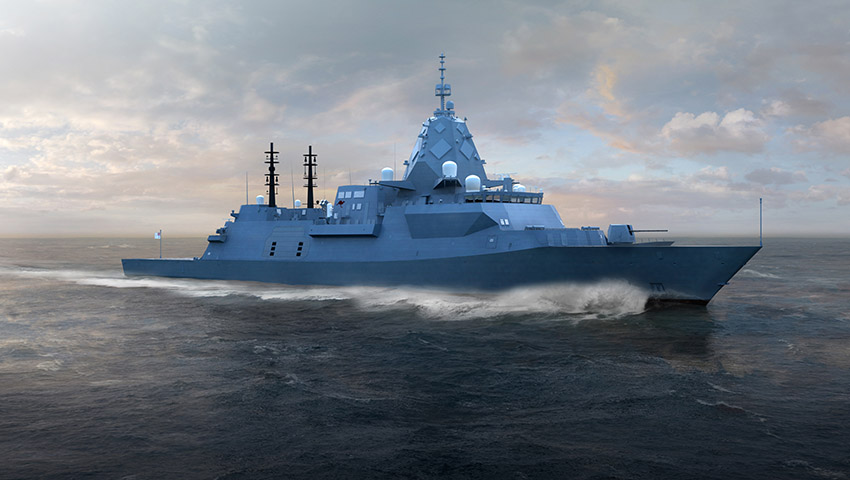BAE Systems Australia’s shipbuilding business has selected four Australian companies to help fast track world-leading manufacturing processes following the first ‘innovation challenge’ to support the Hunter Class frigate program.
To continue reading the rest of this article, please log in.
Create free account to get unlimited news articles and more!
BAE Systems Maritime Australia (formerly known as ASC Shipbuilding) is running progressive ‘innovation challenges’ as the Hunter Program ramps up so that the best Australian technologies will support and deliver efficiencies to the program.
The winning companies from the first challenge are:
- Datanet (SA);
- Lamson Concepts (NSW);
- Cohda Wireless (SA); and
- Dematec Automation (SA).
Over the course of the projects’ life-span, each of the selected Australian companies will showcase their logistics Track & Trace technologies at the Tonsley Innovation District in Adelaide.
BAE Systems Maritime Australia managing director, Craig Lockhart, said, “The immense size of the Hunter Class Frigate Program provides a great focus on the ships that will be manufactured at Osborne and not necessarily the smarts that will go into them.”
Through Hunter, BAE Systems Maritime Australia will build nine of the world’s most potent submarine-hunting frigates at the state-of-the-art Osborne shipyard for the Royal Australian Navy.
“Through these Innovation Challenges we have the potential to revolutionise the way the ships are constructed from the ground up, significantly improving efficiency and productivity,” Lockhart said.
At Tonsley, BAE Systems Maritime Australia has partnered with Flinders University to establish Line Zero – Pilot Factory of the Future, to collaborate with researchers, academics and technologists to test and trial advanced manufacturing technologies and techniques in a factory environment, before adapting them to the shipyard.
Lockhart added, “It’s the development of local technologies for this program that will underpin the development of sovereign capabilities needed for an enduring Australian shipbuilding industry.”
Businesses are invited to lodge expressions of interest for the second Innovation Challenge – Digital Safety Technologies. Details are on the Industry Capability Network (ICN).
The nine Hunter class frigates will be based on the BAE Systems Type 26 Global Combat Ship currently under construction for the Royal Navy and will replace the eight Anzac class frigates when they enter service beginning in the late 2020s.
The Hunter class is billed as an anti-submarine warfare (ASW) centric vessel delivering an advanced ASW capability to the Royal Australian Navy at a time when 50 per cent of the world’s submarines will be operating in the Indo-Pacific region.
BAE Systems Australia announced that it had selected Lockheed Martin Australia and Saab Australia as combat systems integration industry partners, responsible for delivering the Australian designed CEAFAR 2 Active Phased Array Radar, Lockheed Martin designed Aegis combat management system and Saab Australia 9LV tactical interface.
Aegis is capable of simultaneously defending against attack from land targets, submarines and surface ships while automatically protecting the fleet against aircraft, cruise missiles and ballistic missiles.
The $35 billion program sees ASC Shipbuilding become a subsidiary of BAE Systems throughout the build process beginning in 2020 at the Osborne Shipyard in South Australia, creating more than 4,000 jobs.
BAE Systems expects the Australian industry content (AIC) for the Hunter Class build will be 65-70 per cent, which will create and secure thousands of jobs for decades.
At the end of the program the Commonwealth will resume complete ownership of ASC Shipbuilding, thereby ensuring the retention in Australia of intellectual property, a highly skilled workforce and the associated equipment.
SEA 5000 is expected to support over 500 Australian businesses who have been pre-qualified to be part of the Hunter class supply chain, with the Australian steel industry in particular, benefiting from the 48,000 tonnes of steel required to build the ships.

 Login
Login







